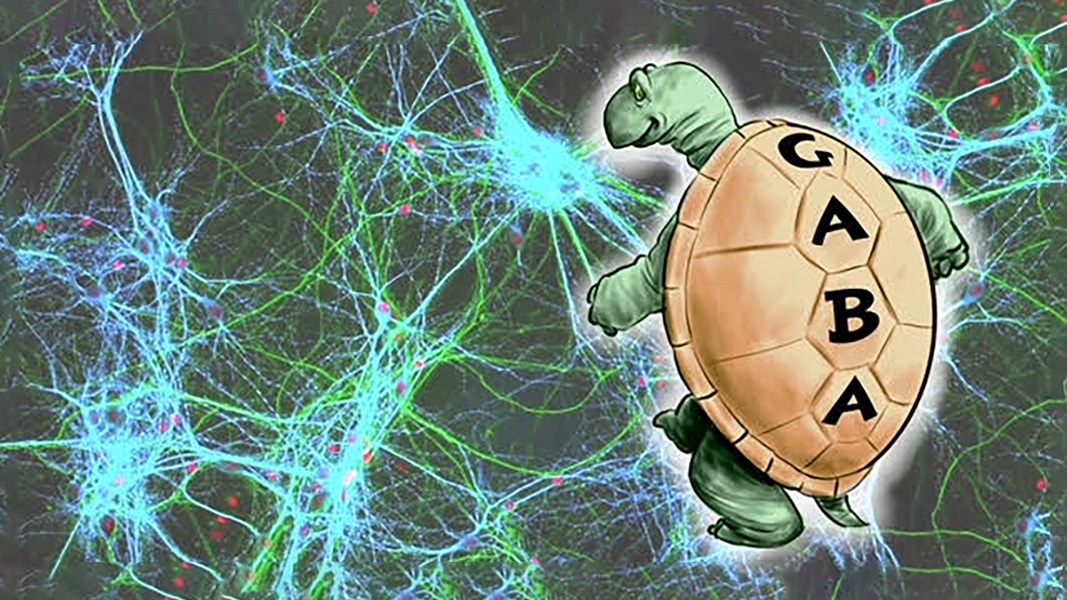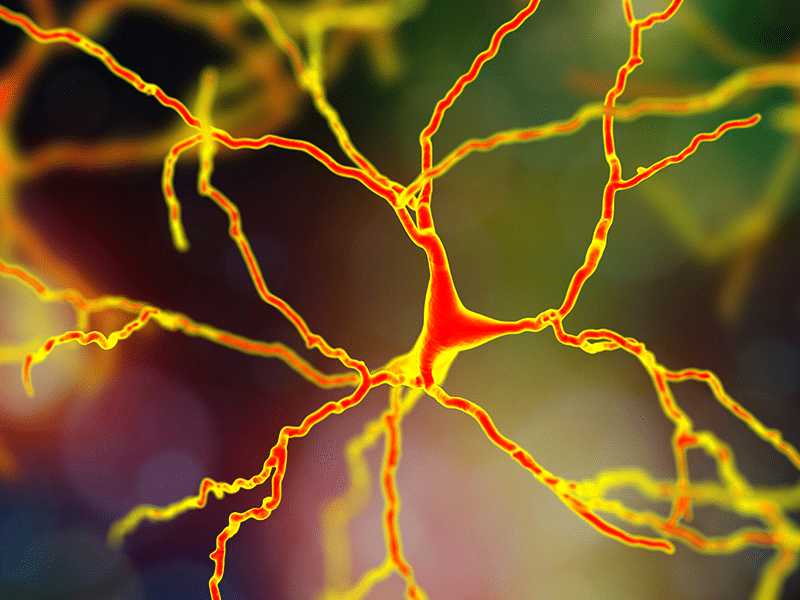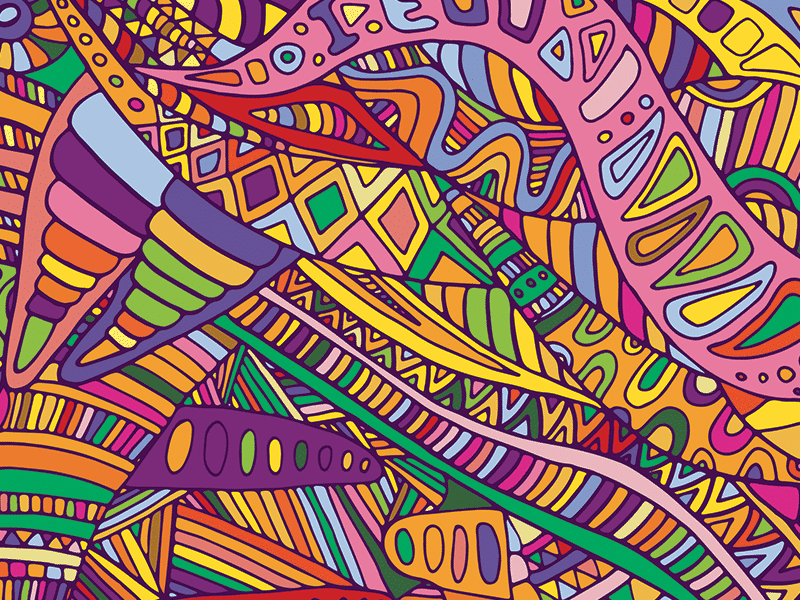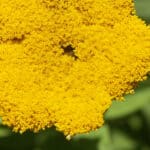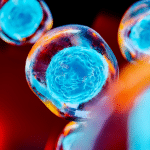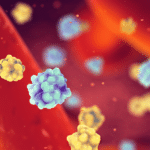“Wisely and slow; they stumble that run fast” – Shakespeare, Romeo and Juliet
As you can see in my daughter’s favorite cartoon based on Aesop’s “Tortoise and the Hare,” the race goes to the slow and steady. That cadence fits for GABA as well. And while GABA is not one of the sexy neurotransmitters you see in the popular press, it should be.
Not as specialized as the more well-known messenger molecules like serotonin, oxytocin or dopamine, GABA is the brain’s primary inhibitory neurotransmitter.
It is the turtle of your neurons, the blinking red light of your synapses, your brain’s signal to calm down its firing. Formally known as γ-Aminobutyric acid, GABA’s chief job in the central nervous system consists of reducing neuronal excitability.
The brain needs balance because too much excitement can be damaging. It’s one of the most important aspects of neuronal health. When the synapses fire too much and too often, they get hot like an engine with no oil. Called excitotoxicity, this occurs commonly in the major neurodegenerative diseases as well as strokes, epilepsy, traumatic brain injuries, alcohol use disorder, and the rapid withdrawal from benzodiazepines. Excitotoxicity often happens because of unhealthy levels of glutamate – the brain’s primary excitatory neurotransmitter (subject of the previous article in this series) and the yang to GABA’s yin.
In a fitting twist of fate, GABA is synthesized from glutamate. Out of the great excitatory neurotransmitter comes the great inhibitory neurotransmitter. And working together, they both act as handmaidens that facilitate the functions of our endocannabinoid system (ECS).
GABA & the ECS
Do you know where the most CB1 cannabinoid receptors are located? The same CB1 receptors that THC uses to get you high? The majority of these famed CB1 receptors are embedded on your brain’s GABA-producing interneurons.

Interneurons – also known as relay neurons, connector neurons, or intermediate neurons – connect to small circuits in local regions of the brain (as well as connecting different brain regions). They act as the crucial middleman between sensory inputs coming into the body and the response of the motor signals that are transmitted back out.
As you can see in this diagram, the classic function of an interneuron is to insert itself into a circuit and, if activated, dial down the signaling. In technical language, GABAergic interneurons “gate signal flow and determine network dynamics [and] are essential for sculpting network responses.” Via their inhibitory actions, interneurons prevent instability in the brain. And when you activate your CB1 receptor, the most likely response is the triggering of an interneuron’s release of GABA, something that carries out so much of the work done by the ECS.
While this ‘get-to-know-a-neurotransmitter’ profile focuses on GABA’s higher-level neural processes, we shouldn’t overlook the importance of GABA’s role in other areas such as:
- Brain development, where it regulates the stem cells, their migration and differentiation, as well as the formation of synapses
- Insulin production in the β-cells of the pancreas
- Suppression of inflammation in the immune response
- Acupuncture’s efficacy, which is partly mediated by the endocannabinoid system’s modulation of GABA
Anxiety, Benzos & CBD
One theory about anxiety views it as a result of insufficient inhibitory control in the brain. In that context, using a benzodiazepine (like Valium or Xanax) to increase inhibition makes sense. Instead of directly activating a receptor like a key turning a lock, the mechanism of action for benzos is a “positive allosteric modulation” (signal boost) of the GABAa receptor.
Benzos are positive modulators of GABA. So are barbiturates (the first generation of downers), the delightful Quaaludes (that a certain generation raves about), and that old human favorite, alcohol. The strengthening of GABA by these drugs leads to the dissociative and sedating effects that can be both pleasurable and terribly addictive.
Benzos aren’t big business just because of big ad budgets. As potent anxiolytic (anxiety-resolving) agents, they’re awfully effective – and possess quite the potential for danger. An overdose, either alone or combined with booze, can be fatal. And the withdrawal effects of benzos can also be lethal if stopped too quickly without tapering.
According to a 2019 Canadian study, when patients received a medical cannabis prescription, half of them discontinued their benzo prescriptions. A 2020 review article on neurological diseases reported that plant cannabinoids might help to restore a broken GABA transmission system. Plant cannabinoids, especially CBD, are notorious for their calming effect. In large part, this may be attributable to the endocannabinoid system’s control over GABA and the calming of the brain.
In rats stressed out by being restrained (they hate this), the endocannabinoid system helped to calm their racing heart via GABA – and if you blocked their CB1 cannabinoid receptor from working, their heart raced even more. In another animal study, Spanish scientists sought to explore how CBD exerts its anti-anxiety effects. They found that in mice with no CB1 receptors, CBD stopped working for anxiety. They also found that the presence of CBD decreased the levels of the CB1 receptor and the GABAa receptor in the amygdala (the fear center of the brain), while increasing CB2 receptor levels.
“It is tempting to speculate that CBD regulates, directly or indirectly, GABAa neurotransmission,” the researchers surmised. This observation concurred with previous findings of Australian investigators, who reported that CBD and the endocannabinoid 2-AG both interact with the GABAa receptor in a way that enhances the natural calming effects of GABA, the slow-down neurotransmitter.
Your Beautiful Nimble Brain
GABA’s inhibitory effects can help your brain be more nimble while trending toward the sweet spot of moderate healthy activation. In this neuronal balancing act, your pay attention to this function is just as important as stop bothering to notice that. To stop from spinning out of control from too much stimulation, it’s essential for the brain to ignore signals that are no longer perceived as dangerous or relevant.
It’s been shown that a combination of dopamine and endocannabinoids regulate the GABA-releasing synapses in a rat’s prefrontal cortex (the highest area of the brain), creating what scientists refer to as “long-term depression” or LTD. That’s shorthand for your brain’s ability to reduce the activity of a circuit after it has been activated too many times. This reduction can last for hours or longer. It’s the negative side of synaptic plasticity, the ability to downgrade a signal so that you are able to upgrade it again if needed. Otherwise, your brain would reach a maximum level of all your circuits firing all of the time.
In addition to protecting the brain from excitotoxicity, the inhibitory effects of GABA influence both learning and memory. In a mouse model of memory, the ability of certain serotonin receptors to regulate spatial memory depends on a pathway involving CB1 and GABA. In another intriguing study, the signaling of GABA accelerates the breakdown of endocannabinoids, which triggers “learning-induced metaplasticity.” This means your brain’s ability to adapt and change comes, at least partially, via your endocannabinoids and GABA.
In the olfactory bulb (the locus of your sense of smell), endocannabinoids modulate your GABAergic synapses. And in the taste center of your insular cortex, the CB1 receptor mediates GABA’s plasticity of your taste learning system. It’s the endocannabinoids that regulate both GABA and glutamate in the striatum, a brain area associated with habit formation and movement control. The ability of the CB1 receptor to help mice be social and exploratory depends on the delicate balance between glutamate and GABA.
The GABA Health Files
For the specific disease conditions related to GABA dysfunction, let’s take a slow, deep science stroll through the GABA garden. As always, more clinical research is needed, but for anyone with these indications or areas of concern, it’s relatively easy to start harnessing the power of GABA and the ECS to improve your health.
- ALS: In a mouse model of amyotrophic lateral sclerosis, the CB1 receptor showed an ability to exert a very fine level of control over the signal transmission of both GABA and glutamate.
- Autism: According to this brain imaging study of humans, both CBD and CBDV help with autism via the GABA and glutamate pathways.
- Circadian rhythms: In the circadian rhythm section of your brain, cannabinoid signaling causes its effects by “recruiting” astrocytes (specialized immune cells of the brain) via adenosine and GABA transmission.
- Down’s syndrome: In a mouse model of Down’s syndrome, the CB1 levels are upregulated on the GABA neurons and downregulated on the glutamate neurons.
- Eyes: In the eyes of rats, CB1 activation helped to fine-tune visual signaling via modulation of GABA.
- Exercise and food: In mice, CB1 receptors enhance exercise activity and lower the desire for food via GABA neurons.
- Huntington’s disease: In humans, Huntington’s disease alters the cannabinoid and GABA receptors. In a mouse model, the level of CB1 receptors on GABA neurons plunges.
- Pain: In a rat model of pain, a synthetic cannabinoid induced analgesia via GABAa. In mice, CBD reduced pain via inhibition of GABA action potentials in the periaqueductal gray (a midbrain region that integrates the behavioral responses to internal stressors such as pain, as well as external stressors such as threats). In mice with nerve injuries, the CB1 levels go up in the cortex and the activation of these CB1 receptors causes pain relief via GABA interneurons. In mice, females experienced more pain relief from CB1 activation than males because females possessed more GABA-producing neurons with CB1 receptors in the relevant brain area. In rats with arthritic knees, the therapy combination of stem cell injections, endurance training (little treadmills) and ozone therapy (I assume they went to LA for this) decreased pain via the CB1 and GABA receptors.
- Puberty: In mice, insulin increases GABA transmission in a neuron that releases a hormone associated with puberty via the endocannabinoid system.
- Schizophrenia: In a rat model of schizophrenia, CBD restored cannabinoid and GABA signaling deficits.
- Sleep: The CB1 receptor helps to control sleep partially via GABA.
See other articles in the Get to Know a Neurotransmitter series.
Lex Pelger writes articles about psychoactives and the endocannabinoid system. He publishes a weekly cannabinoid science newsletter Cannabinoids & the People and conducts 1-on-1 education sessions on using CBD, PEA, THC & CBDA for serious health conditions. © Copyright, Project CBD. May not be reprinted without permission.
Recommended Readings
Glutamate, A Love Story
From the “Get to Know a Neurotransmitter” series: Glutamate excites!
Cannabis & Autism: A Complex Pairing
CBD and THC ease behavioral and health problems linked to autism spectrum disorder.
CBD & the Psychedelic Receptor
CBD and LSD bind to the same serotonin receptor, which mediates psychedelic altered states.

